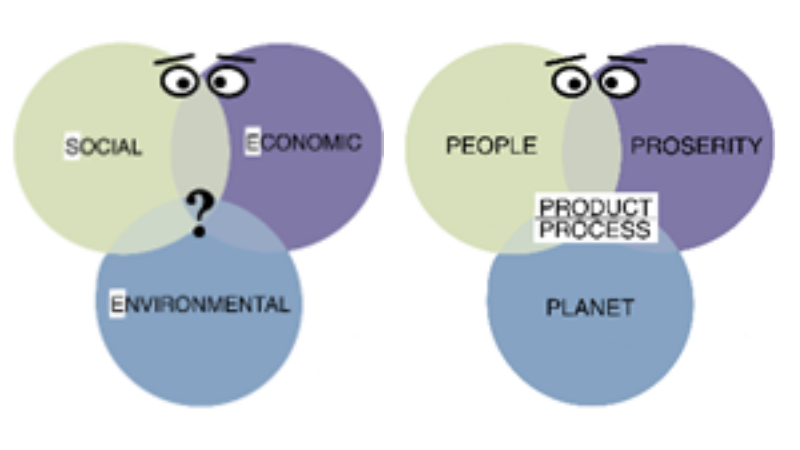I want my students to apply sustainable thinking upfront when they develop solutions to open-ended projects. Fortunately, Green Project Management has developed the P5TM Impact Analysis checklist that will guide them in a sustainable approach. This tool uses plain language to identify negative and positive impacts in 5 categories: People (Social), Planet (Environment), Prosperity (Economic), Product and Process. This same list could also be used when approaching many research projects. It is a comprehensive tool for SEEing sustainability.
I am class coordinator for a 2nd year engineering design course. The students are given a one-page request for proposal (RFP) to introduce a real engineering problem based on a fictious location in Saskatchewan. They are required to develop 3 alternative solutions, select a preferred one, and develop a detailed design based on the minimal information they are provided with. It is challenging to go from a 1-page RFP to a 30 or 40-page engineering report in just 8 weeks, especially with the added complexity of incorporating sustainability.
As it turns out, requiring the sustainability approach effectively introduces a tool for structured brainstorming. An industry colleague, Karen Chovan of Enviro Integration Strategies, introduced me to a free downloadable book entitled “The P5 Standard for Sustainability in Project Management” by Green Project Management. As it is licensed under a creative commons licence as CC, BY, NC, ND, the booklet can be copied and redistributed in any medium or format. Attribution is required and material is only for non-commercial purposes. If the material is transformed or built upon, it may not be distributed.
Included in this book is an open educational resource (OER). The table listed on pages 3 to 6 of the Sustainability Management Plan (starts on page 53/70 of the pdf) is licensed as CC, BY. Karen and I had already used the table by converting it into an Excel digital table for another course. Since it is an OER, this means users are allowed to share and adapt the table. However, the only adaptation required for this class is to limit the columns used to only 2, as the existing template was so well designed. The students are able to refer to the book as a whole for clarification on the meaning of subcategories, though they are mostly self-explanatory. This Excel spreadsheet includes a filled-in example from a brainstorming exercise for a potential bridge to campus, so the students have a template of how to fill it in.
Thinking ahead, and considering class feedback from the current design class, I plan to now use this table for helping the students to prepare questions for a bidders meeting. Until now, each team met with their client to kick-off their project. The students were passive participants who just listened to their client’s expectations. Students could ask questions but as they were so new to the design process, they rarely know what to ask.
In 2023 and beyond, I plan to give the students the attached Excel spreadsheet to brainstorm as per the last 2 years. But furthermore, they will be asked create a list of questions to solicit feedback from their client regarding project requirements. This will switch the students to actively controlling the meeting experience because they will drive the agenda. They can then have discussions regarding whether the client needs to provide more specifications, or if they are expected to do a literature review on certain topics. This may mean that the meeting is delayed a week into the term, but this could be a positive change that allows them to better SEE the expectations for their design reports.

